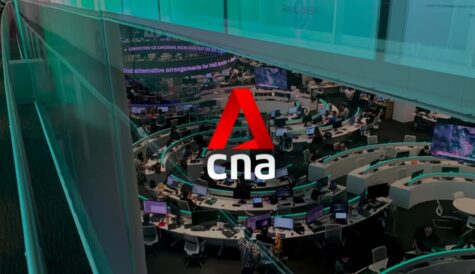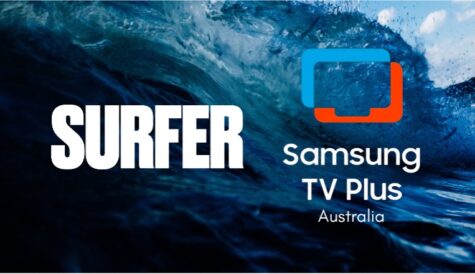
After more than 40 years of operation, DTVE is closing its doors and our website will no longer be updated daily. Thank you for all of your support.
International affairs
While the secret of success in the international channels business is hard to pin down, a number of key ingredients are common to the majority of providers.
There is no single recipe for success in the international pay-TV channel business. Variations in social and economic conditions, different levels of pay-TV penetration, different tastes and different regulatory situations all mitigate against a one-size-fits-all pay-TV model. The importance of diversification of revenue and basic rules of packaging and marketing may apply to all, but different countries (and different channel genres) require different approaches. With the growth of new distribution networks and the growth of video consumption on the internet, things are only going to be become more complicated.
In this environment, many international channel providers have consciously sought to build up a portfolio of channels that cover multiple genres and interests, providing a set of channels that appeal to operators because they can be seen to add value to their own offering.
 For example, UK public broadcaster the BBC’s commercial arm BBC Worldwide’s global channels division offers a portfolio of five wholly-owned channels – BBC HD, BBC Entertainment, BBC Knowledge, BBC Lifestyle and Cbeebies. Over the last year, BBC worldwide has sought to consolidate its position in the Scandinavian and Polish markets. In Scandinavia, the company has secured carriage for the full portfolio of its channels on the Com Hem cable platform in Sweden and the Get cable platform in Norway. BBC Worldwide has also launched its HD channel in Poland. Ian McDonough, BBC Worldwide’s newly appointed senior vice-president, EMEA, says that the company has been successful in driving advertising in a number of markets, notably Poland and South Africa, where it has respectively seen increases of 40% and 50% in ad sales. The company now wants to capitalise on its presence in the Scandinavian market by building an ad sales operation there. According to McDonough, one of Worldwide’s strategic objectives is to build its presence in western Europe: “The challenge is that those are mature markets that are not growing as quickly as central and eastern Europe, but we have content that’s already popular in those markets – we have sold premium content into western European markets for many years, and we are well-known producers of content.”
For example, UK public broadcaster the BBC’s commercial arm BBC Worldwide’s global channels division offers a portfolio of five wholly-owned channels – BBC HD, BBC Entertainment, BBC Knowledge, BBC Lifestyle and Cbeebies. Over the last year, BBC worldwide has sought to consolidate its position in the Scandinavian and Polish markets. In Scandinavia, the company has secured carriage for the full portfolio of its channels on the Com Hem cable platform in Sweden and the Get cable platform in Norway. BBC Worldwide has also launched its HD channel in Poland. Ian McDonough, BBC Worldwide’s newly appointed senior vice-president, EMEA, says that the company has been successful in driving advertising in a number of markets, notably Poland and South Africa, where it has respectively seen increases of 40% and 50% in ad sales. The company now wants to capitalise on its presence in the Scandinavian market by building an ad sales operation there. According to McDonough, one of Worldwide’s strategic objectives is to build its presence in western Europe: “The challenge is that those are mature markets that are not growing as quickly as central and eastern Europe, but we have content that’s already popular in those markets – we have sold premium content into western European markets for many years, and we are well-known producers of content.”
Drawing a distinction between mature and emerging markets is of central concern to leading international factual channel provider Discovery Networks International. The broadcaster recently combined its UK and western European operations, and it is currently doing the same with central and eastern Europe. “With western Europe comprised of mature markets and central and eastern Europe primarily made up of new high-growth markets, this approach aligns our operations to drive growth,” says Mark Hollinger, president and CEO, Discovery Networks International. “Moving forward, we will continue to focus on strengthening our advertising and affiliate partnerships and creating pan-regional commercial opportunities to remain among the fastest growing media companies in Europe.”
Revenue diversification
Discovery has also sought to broaden the range of its services, most recently with the international rollout of female-skewing lifestyle channel TLC, which Discovery launched in Norway in March, followed by 20 Asia-Pacific markets this month. According to Hollinger, TLC will continue to roll out over Europe in the coming months, with a goal of being in 100 million households in 75 countries by the end of the year, “making it the largest female channel brand in the world”, according to Hollinger.
Another motivation for providing channels across a range of genres is to make the channel provider less dependent on one single source of revenue. A full portfolio of channels is more appealing to advertisers. The launch of TLC was specifically made with this in mind, and Discovery’s international advertising revenue increased by 38% in the second quarter. “We see more upside as economies continue to improve and pay-TV attracts a greater share of the overall advertising spend,” says Hollinger. “It’s too early to tell how strong the growth will be into next year, but ad sales continues to move along well. We expect pay-TV to experience organic growth led by emerging markets like Russia, Romania, Bulgaria and Africa.”
A broad-based bundle can help secure distribution as well as provide diversified revenue streams. According to Sean Cohan, senior vice-president of AETN International, his company has four main priorities – to expand the number of channels in markets where it is established with one or two services, to build out its HD offer to new markets, to develop non-linear distribution and to continue to invest in its existing services. AETN, which provides seven channels in the UK via its joint-venture with BSkyB, is keen to expand its distribution in markets where it only has one or two of its portfolio of services available at present. “We think the bundled approach is the right way to go,” says Cohan. “It’s in line with our approach of building partnerships with distributors.” For Cohan, that means not only selling a package of channels but also ancillary features such as video-on-demand and mobile TV services where appropriate. “In terms of territories where we see opportunities we are bullish on Europe generally, even in mature markets,” he says. In countries where AETN currently has one or two channels, including the Benelux and central and eastern Europe, and even in countries where it does not currently have a channel but sells content to existing players, including France and Russia, he sees opportunities for growth.
 AETN has devoted some attention recently to its Crime & Investigation channel, which the company views as a way to signal to platform owners that it is bringing something new to the market. Cohan contrasts this approach with moves by others to acquire “digital shelf-space” by launching a large number of similarly themed channels that target much the same audience. “There are bundles for the sake of bundles to grab shelf space,” he says. “Content providers may be trying to do this or that service but without adding value for the distributor. That may work for a little while but the game is up pretty soon. You end up watching a lot of the same stuff and the platform operator figures it out pretty soon. When you can bring a bundle with complementary genres and demonstrate a clear difference in terms of subscriber popularity and a library of content to assign directly to that service, it’s much more creative.” For AETN, Crime & Investigation and Bio have a significant appeal to a female audience, complementing the male-skewing History. The sensible channel distribution strategy for the company would therefore be to break into markets with History and follow up with Crime & Investigation to broaden its portfolio’s appeal to different audience segments. “The idea is to build a partnership with viewers and operators, and over time you build it out to bring them the richest, broadest experience, adding to the offering to grow the ratings and make the partnership with the platform a mutually beneficial one,” says Cohan.
AETN has devoted some attention recently to its Crime & Investigation channel, which the company views as a way to signal to platform owners that it is bringing something new to the market. Cohan contrasts this approach with moves by others to acquire “digital shelf-space” by launching a large number of similarly themed channels that target much the same audience. “There are bundles for the sake of bundles to grab shelf space,” he says. “Content providers may be trying to do this or that service but without adding value for the distributor. That may work for a little while but the game is up pretty soon. You end up watching a lot of the same stuff and the platform operator figures it out pretty soon. When you can bring a bundle with complementary genres and demonstrate a clear difference in terms of subscriber popularity and a library of content to assign directly to that service, it’s much more creative.” For AETN, Crime & Investigation and Bio have a significant appeal to a female audience, complementing the male-skewing History. The sensible channel distribution strategy for the company would therefore be to break into markets with History and follow up with Crime & Investigation to broaden its portfolio’s appeal to different audience segments. “The idea is to build a partnership with viewers and operators, and over time you build it out to bring them the richest, broadest experience, adding to the offering to grow the ratings and make the partnership with the platform a mutually beneficial one,” says Cohan.
For Comcast International Media Group (CIMG), which provides celebrity news channel E! Entertainment and (more recently launched) lifestyle-oriented Style Network internationally, a focus on targeting emerging markets and building advertising as well as affiliate sales revenue streams are the principal areas of strategic focus. According to Brad Wald, managing director, EMEA at CIMG, the company has “gathered some critical distribution for Style” over the past year. Wald says that CIMG has also seen strong growth in its advertising business, particularly in the UK, where it has a dedicated feed of E!. In France, E! has also seen double-digit ratings growth over the past year, while South Africa has also produced good returns. “We are seeing growth on both sides. We still have room to grow on the affiliate sales side,” says Wald. In eastern Europe, E! launched on Romania’s Romtelecom a year ago and has recently been joined (on both Romtelecom and UPC Romania) by Style. Wald says he is currently targeting the Czech and Hungarian markets.
Although the TV market has been hit hard by the recession, Bob Bakish, president of MTV Networks International (MTVNI), which broadcasts brands from music channels MTV, VH1 and TMF to kids networks Nickelodeon and Nick Junior, and comedy brands Paramount Comedy and Comedy Central, says a model that includes a mix of affiliate fees and ad revenue still makes sense: “The affiliate business was pretty much stable in 2009 because it is multi-year contractual in nature. The ad business was more materially impacted but we’ve seen a rebound recently and we’re standing on a more solid foundation.”
MTVNI also benefits from operating a variety of revenue streams, from programme sales to fully-owned and operated channels. In Brazil, for example, it operates MTV on the country’s terrestrial network under licence because it can’t own a significant equity stake in terrestrial broadcasters. In India, it operates a 50/50 joint-venture because it wanted a local partner that could bring other assets to the table. This flexibility makes it easier to adapt to local market conditions, according to Bakish. “As we look at countries around the world, we see that certain business models sit better based on local market characteristics,” he says. “We can operate anywhere, from doing programme sales to the next level up, which would be licensing the brand, the next level would be a joint-venture and the next would be a 100% owned and operated channel.”
Bakish says he is firmly focused on “building scale” – MTV might be extensively distributed but there is plenty of scope to build its other brands, he says. “Broadly speaking, it’s not about a new country for MTVNI; it’s about expanding our participation in those countries. We’ve seen good growth with Nickelodeon and there are plenty of opportunities there. And in Europe, Comedy Central has launched in the UK, Germany, Poland and the Netherlands so there are additional countries that we can launch it in.”
Mergers and acquisitions
One possible way to build a broad-based portfolio is by acquisition, and the recession has made for favourable conditions for mergers and acquisitions, according to Peter Flamman, senior vice-president, entertainment, northern Europe and the UK at international channel provider Turner. “It has been a good time to invest with the market offering more value for money and more companies open to approaches. We’ve had lots of merger and acquisitions opportunities – some of those we’ve passsed on and some that have come to fruition.” Turner Broadcasting Europe recently closed a deal to acquire Scandinavian channel operator Millennium Media Group as part of a move to expand its entertainment presence. Millennium owns five channels including entertainment channels Star! and TV7 and movie channels Showtime, Silver and Silver HD. The two companies will merge their respective portfolios, which will see Turner adding CNN International, Cartoon Network, Turner Classic Movies and Boomerang. “The company had good distribution, the channels had good positioning in the Scandinavian and Baltic markets and we thought we could add to them in terms of content and marketing. They sit nicely in our portfolio and the deal increases our presence in those markets.”
Mergers and acquisitions can help build a stable of channels that is tailored to the needs of particular geographic markets. For the majority of pay-TV channel providers looking to build a business based on a set of international rights, the usual route is to launch an international feed and then localise in stages. One international pay-TV channel operator that has taken an approach that goes beyond this is Liberty Global-owned Chellomedia, which operates a large number of channels with national, regional and, in some cases ( but with localised feeds) pan-European distribution via a number of focused subsidiaries – Chello Zone (international thematic channels), Chello Multicanal (Iberia), Chello Central Europe and Chello Benelux.
In the Iberian market, Chello Multicanal has been successful in developing a portfolio of channels tailored to local tastes that have captured a pay-TV audience share of 17% in Spain and 18% in Portugal. For managing director Eduardo Zulueta, a local presence and local content is key to Multicanal’s strategy. “Our focus has always been to localise content to the tastes of the local audience,” says Zulueta. Multicanal’s most recent big move was the acquisition of Teuve, formerly the channels business of Spanish cable operator Ono. Teuve’s movie channel CineStar (considered to be the weaker of the pair) will be merged with Chello’s Canal Hollywood at the beginning of October. However, other movie channels targeted at niche audiences will be maintained. Teuve’s music channel meanwhile has been shut down in favour of Multicanal’s Sol Música. Multicanal will continue to run Teuve’s documentary channel Natura alongside its own Odisea, as the two are considered to be broadly complementary.
Areas of interest
While large, well-backed channels providers including BBC Worldwide and Discovery can offer broad-based channel bundles, other providers have focused on a particular niche or area of interest. Kids channel KidsCo, whose shareholders include content creators Cookie Jar Entertainment and Corus, launched just three years ago but already boasts deals in 92 territories. Managing director Paul Robinson admits to an early land grab but as the channel nears carriage in 100 countries, he says the goal is to penetrate deeper into existing territories, and to grow its presence in western Europe. “We’ve made pretty good progress but there’s still lots to do,” says Robinson. “When you start, you’re never quite sure where the business opportunities will lie. The recession was not helpful but it didn’t happen in every market. One of the great things about being a global company is that you can focus effort on wherever the opportunities are.” The fact that Europe is starting to crawl out of recession, coupled with the fact that KidsCo now has a “stronger product” and a good base level of distribution, makes the time right for the channel to focus its efforts on the region.
KidsCo hasn’t been badly affected by the global slump in ad revenues as the channel is funded predominantly by carriage fees. Robinson says that 80-85% of revenues still come from affiliate fees. “One of the reasons we decided not to rely as much on advertising is down to our safe environment promise, which is not only about having a safe environment editorially, which means shows that are free from lots of fighting and inappropriate behaviour, but we’re also very cautious about the commercial environment that children are exposed to,” he says. “That said, we are growing our advertising base and I think you’ll see the advertising percentage increase over the next one to two years. Channels need to get in enough households to start selling advertising and we’re just starting to get to that point now.”
If marketing a kids channel requires a specific set of competencies, delivering a sports channel – a field generally dominated by local pay-TV operators in command of sought-after national premium rights – is perhaps even more challenging. For international sports channel Eurosport, delivering its services to as many screens as possible is a key priority.
“One of the main priorities for the group in 2011 is to strengthen our multimedia platform, and we will do this by adding quality programming to our TV channels and online and mobiles sites, as well as maintaining our expansion into new territories,” says Jean-Thierry Augustin, managing director, distribution, rights acquisition and development at Eurosport. On the TV side, he says, a key priority is the further distribution of Eurosport 2, the broadcaster’s second channel. Eurosport recently launched a Swedish-language version of Eursoport 2 and plans to follow this up by announcing another local version of the channel in the Nordic region soon. “Beyond TV, we will shortly announce the launch of a new website, which will add to our growing online portfolio, the number one sports destination in Europe,” says Augustin. “We will also continue to pioneer new media technologies on the mobile platform, as well as bring our excellent sports content to VOD and players and new devices such as the iPad.” Augustin says that Eurosport’s Apple apps have met with huge global success. “To date our iPhone app has been downloaded over 2.6 million times in just over a year while our iPad app [has been downloaded] over 160,000 times,” he says.
The European sports channel market continues to be extremely competitive. “When creating a channel in Europe it is very important to find the perfect balance between launching it in new or existing markets. For European viewers it is quality that matters rather than quantity,” says Augustin, who adds that Eurosport and Eurosport 2 are trusted brands.
Another key focus for Eurosport is expansion outside Europe. “We have been very satisfied with our positive developments in Asia with Eurosport Asia-Pacific, and in the near future we are looking to use this model to push into new territories,” says Augustin.
 Key priority
Key priority
While commercial channel providers must carefully weigh up the prospects offered by new markets, for publicly-funded services such as news channels including France24 and Al Jazeera, distribution is the key priority. France24 and Al Jazeera share a number of characteristics, not least of which is that they are relatively new in the market (France24 is three and a half years old; while Al Jazeera Arabic has been around for 14 years, Al Jazeera English is only four years old), and they are still very much in a growth phase.
Philippe Rouxel, vice-president of worldwide distribution at France24, says that one key aim for the channel, which is currently available in 125 million homes via cable, satellite and IPTV, is to expand distribution and “become a truly global channel”. France24 now has a global satellite footprint via satellite, which was not the case prior to this year. “Going global means having France24 being available in any region of any continent,” says Rouxel. He says that France24 will push the English-language version of the channel in the Asia Pacific region, where it has launched on the AsiaSat satellite platform, as well as in the Americas. In Europe and the Middle East, the Arabic version of the channel will have a crucial role to play. In the European market, France24 launched earlier this year in English in the Scandinavian market on Canal Digital via the Thor satellite platform at 1° West. The channel’s presence on Canal Digital’s pay-TV platform, with an EPG listing, is expected to produce good results in terms of viewer uptake over the coming months. “We want to take advantage of that footprint because we were almost totally unknown [in that market],” says Rouxel, who is also targeting eastern Europe as a likely market for the channel to build its presence. In Russia the channel is available on the NTV Plus platform in English, and in July it launched on the Digiturk platform in Turkey.
France24 is currently available in French and English on a 24-hour basis, and in Arabic for 10 hours a day. Another key goal is to make the Arabic version a 24-hour channel by the end of this year. The aim, says Rouxel, is to have a full-time channel available via the Arabsat and Nilesat platforms, with more satellite capacity being allocated to the new channel on a full-time basis. France24 is also considering launching the channel on Astra and other key European positions in order to extend its reach to Arabic speakers in Europe.
The third pillar of the channel’s tripartite strategy is to become a genuinely international multimedia news provider. Rouxel points out that France24 is already a pioneer in this field, having launched on Apple’s iPhone as early as February 2009, and having more recently launched on the iPad. The channel is now looking to build its presence on smart-phones outside of the Apple footprint. France24 has a total operating budget of ?100m a year from the French state, and the channel is looking to develop advertising revenue over time, but its focus at the moment is primarily on distribution. “The idea is to create new revenue streams later on with advertising,” says Rouxel. “Our main goal now is to make the channel as visible as possible in all parts of the world.”
Al Jazeera is also currently still at the stage of focusing on building the brand and awareness of its English-language channel. Al Anstey, Al Jazeera Networks’ director of media development, says that the broadcaster wants to give its viewers a greater depth of experience by making content available on all platforms, and to extend the channel’s base, possibly by extending the number of languages in which it is available, or by combining Al Jazeera content with content from existing channels. The channel recently secured a place on the UK’s Freeview digital-terrestrial platform. “Each market is different,” says Anstey. “If you take the UK, audiences are consuming news on all sorts of different platforms. We are on Sky, Freesat and Freeview and each has a complementary reach, but it’s important to be on other platforms as well. In some territories you need combinations of different platforms. It’s a strategic approach to each individual market. Some are very fragmented and others have big distribution platforms like Freeview.”
For Anstey, one priority is to break into markets where Al Jazeera English is not already present, notably the US, where he says the broadcaster is still working to tackle widespread misconceptions about its output. “It’s a key focus for us at the moment, but it’s a long campaign,” he says. Al Jazeera is looking to build its brand by means other than classic cable distribution, for example using radio or via partnerships that allow it to distribute content including Link TV, the alternative distribution network available on the DISH and DirecTV satellite platforms.
As with France24, developing commercial revenue streams has taken a back seat to expanding distribution for Al Jazeera. However, developing ad revenue is also a goal for the network. “At the moment I’m working on getting more and more detailed figures on audience reach and demographics,” says Anstey. The organisation also wants to expand distribution of its Arabic-language channels. While news channel Al Jazeera Arabic has been well-established in the Arabic world for the last 14 years, the broadcaster is looking to expand the availability of its more recently launched documentary and sports channels. “In the Arabic-speaking world it’s unique to have a high-end documentary channel,” says Anstey. “It’s gaining momentum all the time, building reach and getting on new platforms. With sports it’s expanding also – we had the World Cup rights in the Middle East and Africa region. It’s about making sure we can service distribution across the Middle East.”
Premium tier
The majority of international channels are available in basic or extended basic tiers. Developing a premium proposition is more practical for channels with local roots that can acquire sports and movie rights on a territory-specific basis. One channel provider that has developed a premium business (in a market where premium services are a tough sell) is HBO Central Europe, which provides channels across the majority of territories in the region. Challenges include piracy, which makes it difficult to offer a premium VOD service and turn a profit. “Premium is a very different kind of sale. We have to work with the operator [and] it demands the presence of a sales office,” says Linda Jensen, CEO of HBO Central and Eastern Europe. “We are successful in central and eastern Europe because we work there.” Regarding piracy, she says that while it clearly is a problem she believes that “if you give people a solid offer they will pay for it”. A key point is that content should be available in a window that matches those available to subscribers elsewhere around the world.
Jensen believes that HBO Central Europe will see a lot more indigenous subscriber growth as digital tiers gain ground. Maintaining strong partnerships with operators will therefore remain a cornerstone of the broadcaster’s strategy. She believes that the channel market in her region may consolidate somewhat, particularly given the economic problems in a number of territories, but argues that the premium tier still offers a solid business model.
Chellomedia’s Dutch and Belgian channel operation Chello Benelux also operates in premium, providing the Sport1 and Film1 family of channels, created originally from the acquisition by Liberty Global of Canal Plus’s Benelux operations. Chello Benelux now operates five film and up to six sports channels (with four of the latter being aired only during special events), together with related websites, which also offer video as part of the online experience, including clips and pay-per-view events on the sports site. Chello Benelux managing director Jeroen Bergman says that the channels were originally sold together as a package but Chello discovered over time that people churning out of the service could often be persuaded to keep one of the services – either sports or movies – because the other was of limited or no interest to them. “For the last couple of years we have focused more on individual product promos,” says Bergman. While the majority of subscribers still take both services, of those that take only one the majority take Film1. “In the Netherlands movies are stronger,” says Bergman.
Bergman says that, while the market has been tough over the last two years, Chello Benelux has still managed to achieve double-digit growth, driven primarily by the continuing progress of digitisation. Given the straitened nature of the times, developing a consistent and workable strategy – whether that be building a broad-based portfolio of services, focusing on a niche that is in demand, developing a highly localised expertise or building a premium business model – will be more important than ever to channel providers in the years ahead.


